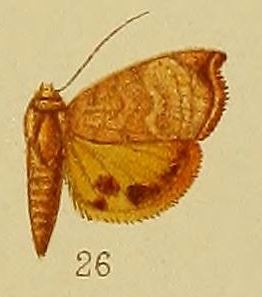
Doxycycline is a broad-spectrum antibiotic of the tetracycline class used in the treatment of infections caused by bacteria and certain parasites. It is used to treat bacterial pneumonia, acne, chlamydia infections, Lyme disease, cholera, typhus, and syphilis. It is also used to prevent malaria. Doxycycline may be taken by mouth or by injection into a vein.

Rosacea is a long-term skin condition that typically affects the face. It results in redness, pimples, swelling, and small and superficial dilated blood vessels. Often, the nose, cheeks, forehead, and chin are most involved. A red, enlarged nose may occur in severe disease, a condition known as rhinophyma.
Ocular rosacea is a type of rosacea that affects the eyes. Signs and symptoms generally consist of redness, irritation or burning of the eyes. Affected individuals may also feel that there is something, such as an eyelash, in the eye and frequently have redness of the nose and cheeks as well. Complications include corneal ulcer.

Perioral dermatitis, also known as periorificial dermatitis, is a common type of skin rash. Symptoms include multiple small (1–2 mm) bumps and blisters sometimes with background redness and scale, localized to the skin around the mouth and nostrils. Less commonly the eyes and genitalia may be involved. It can be persistent or recurring and resembles particularly rosacea and to some extent acne and allergic dermatitis. The term "dermatitis" is a misnomer because this is not an eczematous process.

Rhinophyma is a condition causing development of a large, bulbous nose associated with granulomatous infiltration, commonly due to untreated rosacea. The condition is most common in older white males.

Hyblaeidae are the "teak moths", a family of insects in the Lepidopteran order. The two genera with about 18 species make up one of the two families of the Hyblaeoidea superfamily, which in the past has been included in the Pyraloidea. Recent phylogenetic studies find varying relationships of Hyblaeoidea among Ditrysian Lepidoptera: Mutanen et al. (2010) find the superfamily to group either with Pyraloidea, or – more often – with Thyridoidea or butterflies. The results of Wahlberg et al. (2013) and Heikilä et al. (2015) indicate a sister-group relationship with Pyraloidea.

Hyblaea puera, the teak defoliator, is a moth and cryptic species complex native to South Asia and South-east Asia. It was first described by Pieter Cramer in 1777. The species has also been recently reported to be present in Central America and Africa. The caterpillar feeds on teak and other trees. It is considered to be one of the major teak pests around the world.

Hyblaea is a genus of moths of the family Hyblaeidae first described by Johan Christian Fabricius in 1793.
Gnathophyma involves swelling of the chin. It is a type of lesion associated with rosacea, a common chronic inflammatory skin disorder of the sebaceous glands characterized by redness, swelling, and acne-like pustules.

Hyblaea constellata is a moth in the family Hyblaeidae first described by Achille Guenée in 1852. It is found in India, Sri Lanka, south-east Asia, including China, Japan, Taiwan, Myanmar and Thailand. It is also found in Queensland, Australia.

Hyblaea ibidias is a moth in the family Hyblaeidae. It is found in New South Wales, Australia.

Somatina rosacea is a moth of the family Geometridae first described by Charles Swinhoe in 1894. It is found in northeast India's Khasi Hills and in Taiwan.
Hyblaea bohemani is a moth in the family Hyblaeidae described by Wallengren in 1856.
Hyblaea erycinoides is a moth in the family Hyblaeidae described by Francis Walker in 1858.

Hyblaea flavipicta is a moth in the family Hyblaeidae described by George Hampson in 1910. A material sample of it was found on the southeast coast of Kenya.
Hyblaea insulsa is a moth in the family Hyblaeidae described by Max Gaede in 1917.
Hyblaea occidentalium is a moth in the family Hyblaeidae described by William Jacob Holland in 1894.
Hyblaea sanguinea is a moth in the family Hyblaeidae described by Max Gaede in 1917.
Hyblaea saturata is a moth in the family Hyblaeidae described by Francis Walker in 1865.

Hyblaea xanthia is a moth in the family Hyblaeidae described by George Hampson in 1910. It is found in the Democratic Republic of the Congo (Katanga), the Seychelles (Aldabra), South Africa and Zambia.








